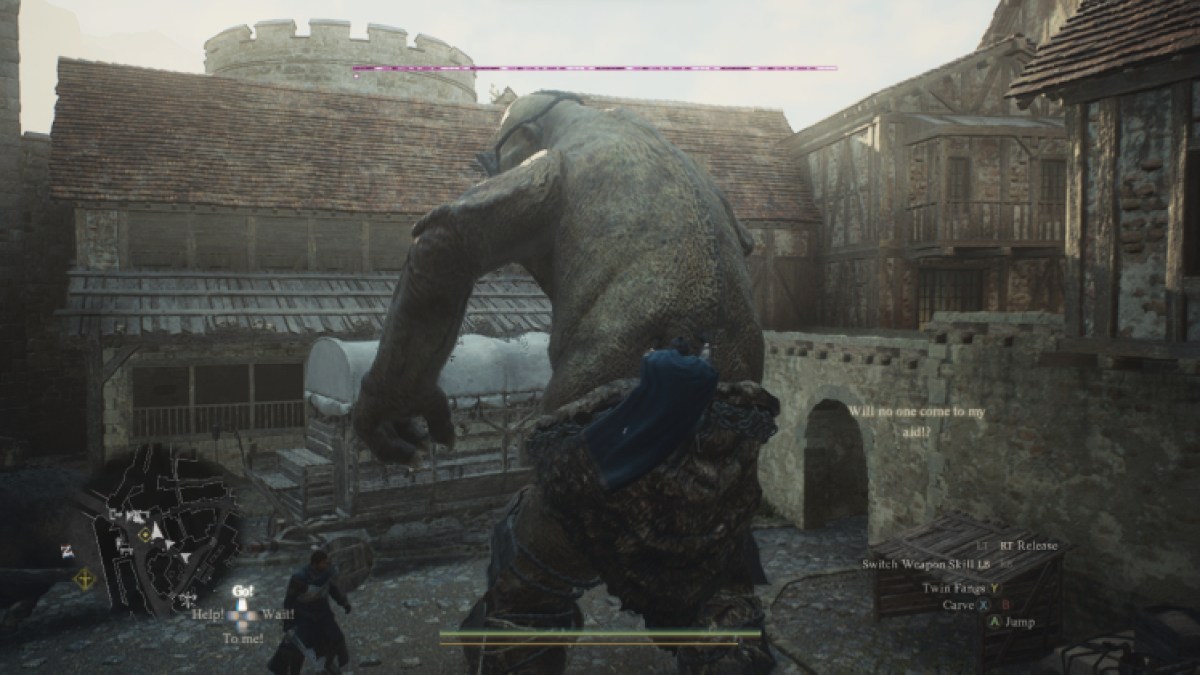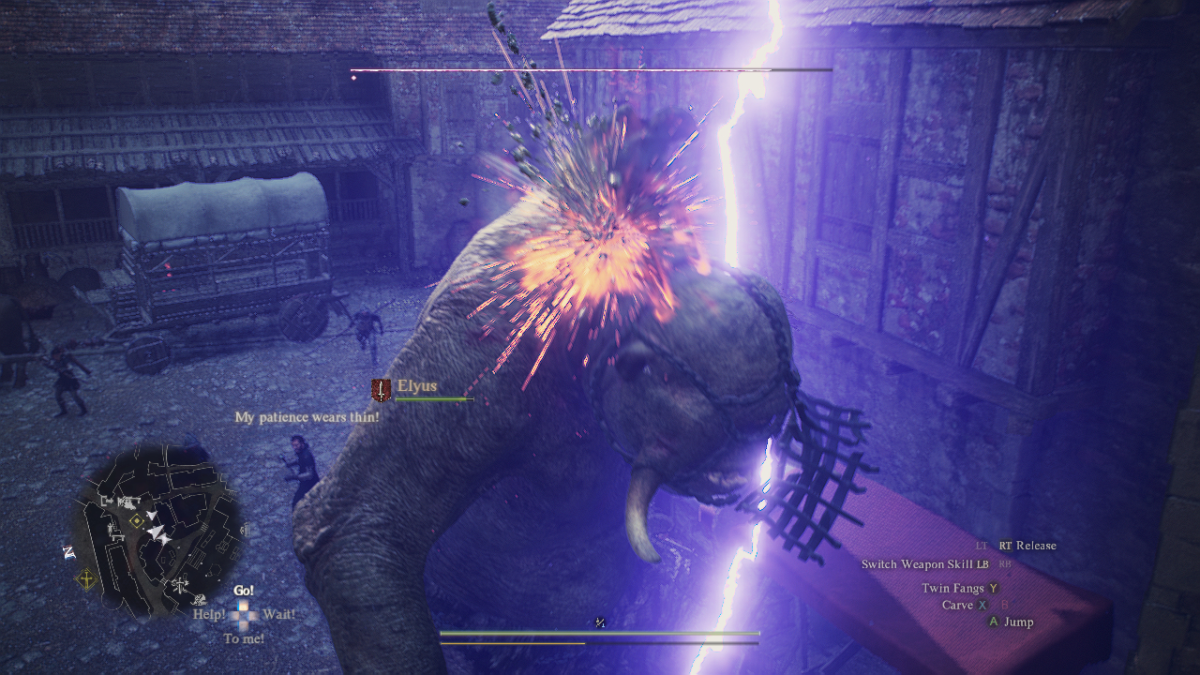Climbing onto enemies in combat in Dragon’s Dogma 2 is a multifaceted strategy that should be done only when the situation calls for it. It is super fun though, and allows for some great moves. You’d best learn how to use this skill properly.
How to climb enemies in Dragon’s Dogma 2
Every character or any vocation can climb large enemies in Dragon’s Dogma 2. Typically, if the enemy has more than one health bar, then it’s big enough to climb.
The grab button doubles as the cling button, but it only works when you’re in the air. So jump up and quickly press the grab button, and your character will cling onto the beast. Naturally, you have to be right next to it for this to work.

You needn’t hold the climb button – once you’re on, you’re on. That is, until you jump off or get knocked off.
When climbing an enemy, you can travel all around them, like an ant. Just be very careful, as they won’t take too kindly to being scaled. When on an enemy, you can keep striking it with either attack – or with your skills, if they are able to be used when mounted on a foe.
Note that even Archers and Mages can climb enemies despite their ranged attacks. They’ll be less versatile when climbing, but can still attack. Some skills even have advantages when clung onto an enemy.
Now you know how to climb foes in Dragon’s Dogma 2, make sure you know when to use to have the most effect in battle.
Pros and cons of climbing enemies in Dragon’s Dogma 2
It’s not always viable to climb enemies during combat (which is hypocritical of me to say, as I climb every opportunity I get). Each situation must be dealt accordingly.
Climbing enemies is best used by those of the Thief vocation. This is because their rapid attacks and low armor make being in a blind spot desirable. However, it is a viable strategy for most vocations, although each must deal with the potential downfalls of climbing.
When climbing on an enemy, your attack speed is slower, although you can climb to critical spots, like the head, and deal greater damage. Also, being on an enemy does contribute to its weight and balance. So if others are pushing a monster, orientate yourself toward their direction to add more weight to topple the beast.

Additionally, being on the enemy will typically mean you evade enemy attacks. Climbing onto a Cyclops is usually a good idea as it doesn’t do much to get you off, and you’ll be far from its many crushing attacks.
When grappling onto a monster that can fly, then expect to be dragged with it into the air. On more than one occasion I’ve been flung off a Griffin’s back when it takes flight. The best practice here is to stop attacking. When you attack, you’re holding on with less grip. The fall to the floor will be devastating, and often lethal.
The same goes for mobile enemies, such as the Minotaur. When it charges, make sure to cling on for dear life. You won’t want to be hitting the floor at that speed.
So although you get to evade enemy attacks, you are prone to falling off, which is worse in some cases. Be careful, and leap off when you must, and you should be in good stead to climb enemies to strike their weak points.
With this new knowledge, you can approach your combat encounters with renewed vim, Arisen. Another key piece of knowledge to have about your enemies is their weaknesses, which you ought to take advantage of.






Published: Mar 22, 2024 05:00 am